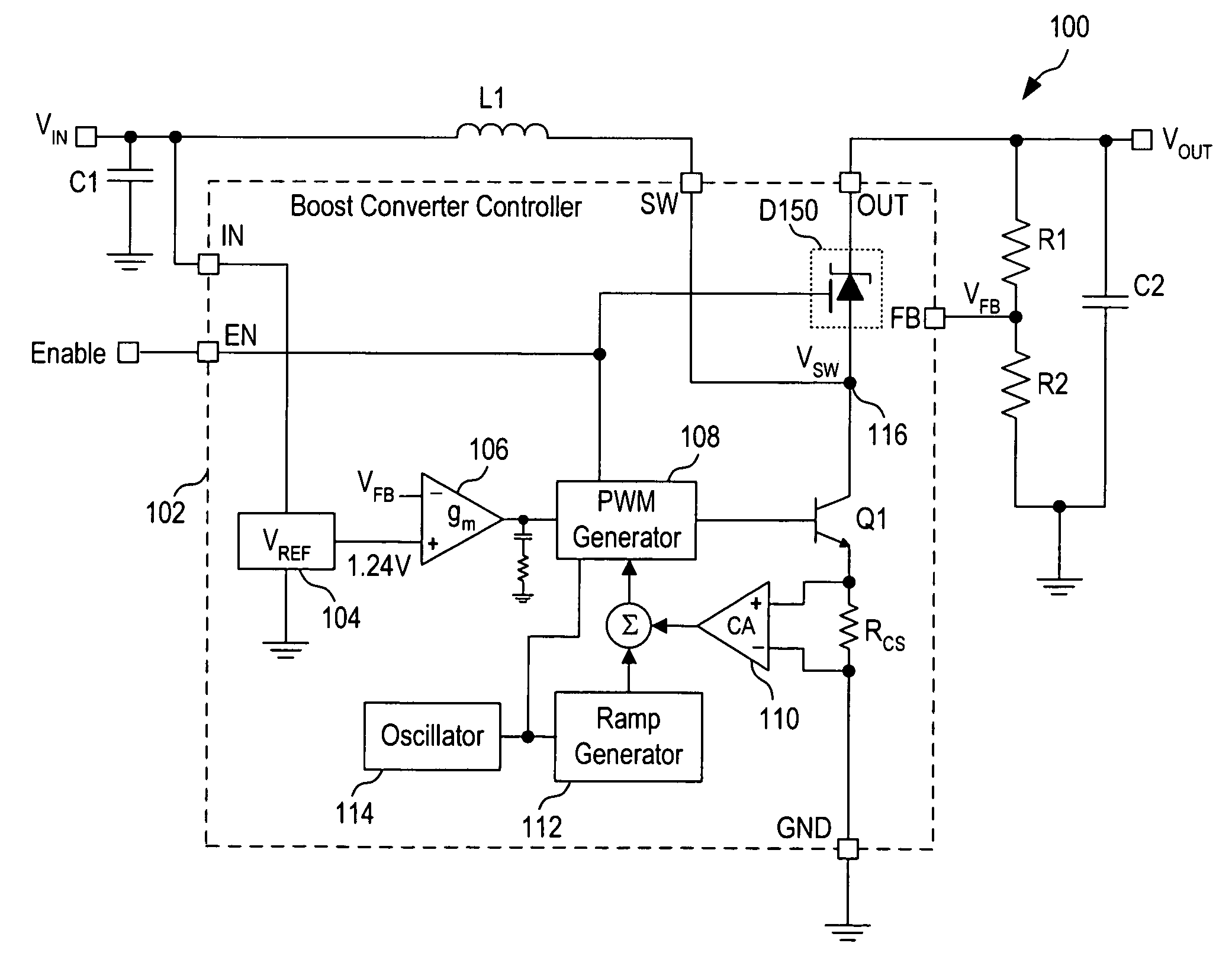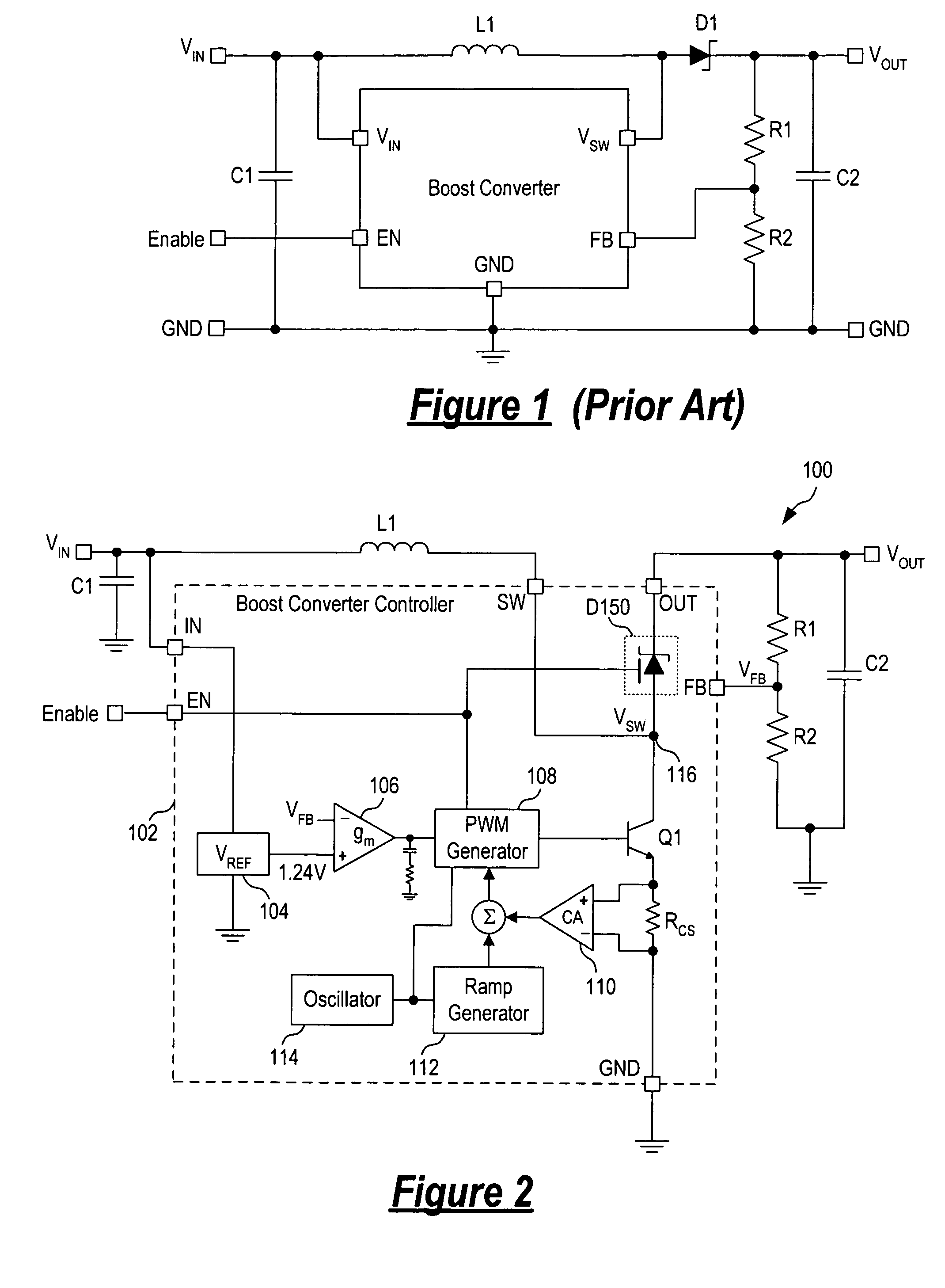Non-synchronous boost converter including switched schottky diode for true disconnect
a boost converter and diode technology, applied in the direction of electric variable regulation, process and machine control, instruments, etc., can solve the problems of reducing battery life, affecting the efficiency of voltage converters at higher voltages, and unsatisfactory current flow through the diode to the output load
- Summary
- Abstract
- Description
- Claims
- Application Information
AI Technical Summary
Benefits of technology
Problems solved by technology
Method used
Image
Examples
Embodiment Construction
[0012] In accordance with the principles of the present invention, a boost converter includes a switched Schottky diode to rectify the switched output voltage of the boost converter where the switched Schottky diode has forward conduction blocking capability. Specifically, the switched Schottky diode has an anode terminal coupled to receive the switched output voltage and a cathode terminal providing the DC output voltage of the boost converter. The switched Schottky diode further includes a gate terminal coupled to receive a control signal for turning the switched Schottky diode on and off. When an enable signal coupled to the gate terminal is asserted to turn the switched Schottky diode on, the switched Schottky diode operates as a normal Schottky diode. When the enable signal coupled to the gate terminal is deasserted to turn the switched Schottky diode off, no forward current flows through the switched Schottky diode even when the anode terminal is forward biased relative to the...
PUM
 Login to View More
Login to View More Abstract
Description
Claims
Application Information
 Login to View More
Login to View More - R&D
- Intellectual Property
- Life Sciences
- Materials
- Tech Scout
- Unparalleled Data Quality
- Higher Quality Content
- 60% Fewer Hallucinations
Browse by: Latest US Patents, China's latest patents, Technical Efficacy Thesaurus, Application Domain, Technology Topic, Popular Technical Reports.
© 2025 PatSnap. All rights reserved.Legal|Privacy policy|Modern Slavery Act Transparency Statement|Sitemap|About US| Contact US: help@patsnap.com


